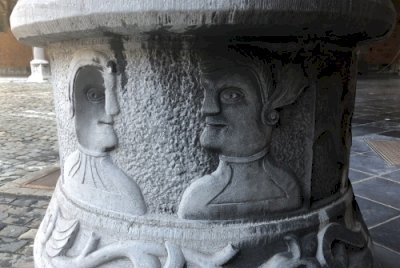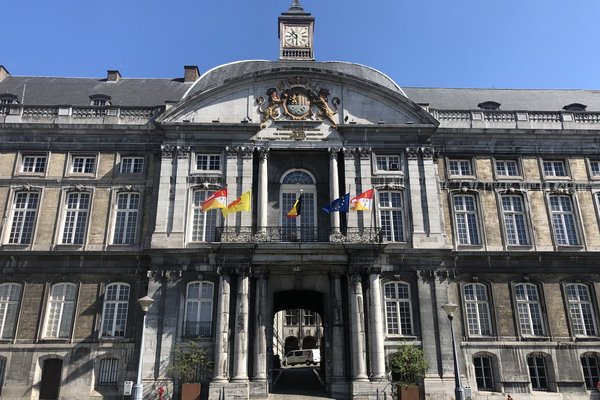Belgium
Le palais de Princes Eveques de Liège
The Palace of the Prince-Bishops was the religious and political center of the once independent Principality of Liège. It has its origins in the 10th century and was restored and extended several times since. The Palace has three courtyards in Gothic-Renaissance style.
Site Info
Official Information
- Full Name
- Le palais de Princes Eveques de Liège (ID: 5361)
- Country
- Belgium
- Status
-
On tentative list 2008
Site history
History of Le palais de Princes Eveques de Liège
- 2008: Added to Tentative List
- Added to tentative list
- Type
- Cultural
- Criteria
Links
- UNESCO
- whc.unesco.org
All Links
UNESCO.org
- whc.unesco.org — whc.unesco.org
Community Information
- Community Category
- Secular structure: Palace
Travel Information
Recent Connections
News
No news.
Recent Visitors
Visitors of Le palais de Princes Eveques de Liège
- Adrian
- Alexander Lehmann
- Astraftis
- Badwater
- BobSmithseestheworld
- bossc
- Christoph
- Clyde
- Coppi
- Csaba Nováczky
- Damientournay
- Daniel Chazad
- David Berlanda
- Digits
- Dimitar Krastev
- Els Slots
- Errol Neo
- Fam39
- Farinelli
- Feldhase
- Femke Roos
- FK
- George Gdanski
- Gilles
- giulio25
- Hadrianus
- Hasco
- henrik_hannfors
- Hubert
- Jakob F.
- Jasam
- Jonas Kremer
- jonathanfr
- jonstst
- Jurre
- Lisu Marian
- Maciej Gil
- MaxHeAnouBen
- MH
- M. Huineman
- Nick M
- Patrik
- Paul Schofield
- Pieter Dijkshoorn
- pressdm
- Reiseblitz
- Roel Sterken
- Roger Ourset
- Roman Bruehwiler
- Rudegirl
- Sclowitz
- Sehnsuchtsbummler
- Solivagant
- Tarquinio_Superbo
- Thomas Buechler
- Thomas van der Walt
- tony0001
- Tsunami
- WalGra
- Westwards
Community Reviews
Show full reviewsEls Slots
Le palais de Princes Eveques de Liège
Le palais de Princes Eveques de Liège (On tentative list)

The Prince-Bishops' Palace in Liège has been on Belgium’s Tentative List since 2008. It has been visited so far by 43 of our community members, but was left unreviewed by all. This restraint is probably linked to the very low 22% approval rating they gave it. Last Sunday however I decided to give it a go, as I was also curious about the rest of the city center of Liège which has undergone favourable improvements during the past years.
The palace is a testimony to the 10 centuries when Liège was an independent principiality within Europe. It was governed by prince-bishops, who combined political and religious power. The complex used to include a cathedral as well, but that was demolished in 1793 during the French Revolution-inspired uprising against the prince-bishops.
The long main façade of the building nowadays occupies one quarter of a busy square. Cars, public transport and road works all provide obstacles to really appreciate its setting. The palace is still used for administrative and judicial functions, which prevents ordinary visitors from entering the building. Therefore they miss out on the second, inner courtyard, and the interior decorations. Defendants in court cases, escorted by police officers, do get to appreciate them though! The interior decorations date mainly from the 18th century. They are highlighted in the description and would be part of the site’s proposed OUV. However, the long list of tapestries, paintings and state rooms does not sound particulary appealing to me. This book, …
Keep reading 0 comments
